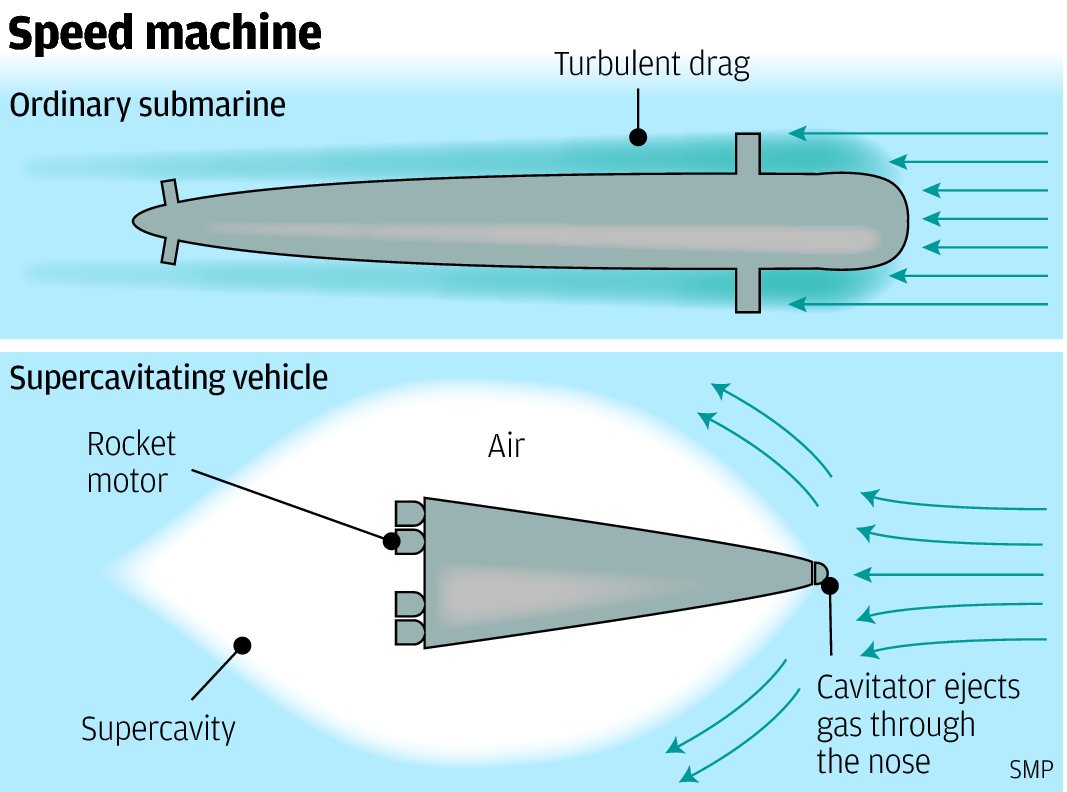General Discussion
Related: Editorials & Other Articles, Issue Forums, Alliance Forums, Region ForumsShanghai to San Francisco in 100 minutes by Chinese supersonic submarine

China has moved a step closer to creating a supersonic submarine that could travel from Shanghai to San Francisco in less than two hours.
New technology developed by a team of scientists at Harbin Institute of Technology's Complex Flow and Heat Transfer Lab has made it easier for a submarine, or torpedo, to travel at extremely high speeds underwater.
Li Fengchen, professor of fluid machinery and engineering, said the team's innovative approach meant they could now create the complicated air "bubble" required for rapid underwater travel. "We are very excited by its potential," he said.
Water produces more friction, or drag, on an object than air, which means conventional submarines cannot travel as fast as an aircraft.
http://www.scmp.com/news/china/article/1580226/shanghai-san-francisco-100-minutes-chinese-supersonic-submarine
pinboy3niner
(53,339 posts)muriel_volestrangler
(101,257 posts)There's no mention in the article, or the CalTech 2001 paper it refers to, of turbulence. Submarines are already designed to avoid turbulence, and there is almost certainly none along its straight sides where the artist points to (you get it behind sharp corners, or bodies that taper too fast). The problem that supercavitation avoids is the friction with the denser water, not turbulence.
I don't really see why this is more advantageous than sending a rocket through the atmosphere, though. It matters for torpedoes, which have to hit an underwater target, but you get your air, or near vacuum if you go up, for free if you avoid the water, for transport (it doesn't seem to specify what pressure the air sheath has to be to stay stable, but I'd have thought it would have to be the same pressure as the surrounding water - ie a bit higher than atmospheric pressure, if you're avoiding surface waves, as you'd have to).
HooptieWagon
(17,064 posts)First of all, sound travels much faster in water than air... so supersonic speed underwater is far greater than air. Even with breakthroughs, there is still far too much resistance to reach that speed.
Second, the proposed "air bubble" is going to require an air supply... where does it come from?
Third, the shape of the sub will have so much drag at lower speeds, it may never escape those lower speeds to get to a speed where the shape may be advantagous.
Fourth, subs now go about 40-50 knots. Occassionally they hit something. A sub going supersonic will hit a lot of things, as it will be going faster than its sonar. As they say about driving a car at night, "don't overdrive your headlights".
Kelvin Mace
(17,469 posts)the SDI missile system.
panader0
(25,816 posts)but I think that would be horrible for sea creatures.
VanGoghRocks
(621 posts)project or technology moves forward. I will not indulge in the seemingly de rigueur China bashing, save to note that the Chinese government and people will need to be made aware of potential eco-system damage this technology might cause.
DetlefK
(16,423 posts)What happens when a massive object hits water at supersonic speeds?
GeorgeGist
(25,306 posts)KurtNYC
(14,549 posts)WHY? why go to an environment with much more resistance, water?
If they want to go one better, they could work on supersonic mining gear that just bores through the earth about 4 miles below the surface...Step One is, apparently, to make a simplistic drawing in PowerPoint. Step Two is to declare "China has moved a step closer to creating a supersonic" mining gear, by which they mean, they spent 5 minutes making a drawing.
Eleanors38
(18,318 posts)sounds roughly the same, only the speeds were below 100 knots.
951-Riverside
(7,234 posts)Its bad enough oil and coal is destroying the atmosphere and creating global warming, its bad enough wind and solar farms are destroying bird populations, its bad enough miles of land is being displaced and destroyed by fracking, its bad enough military sonar is devastating Marine life but no that's not good enough, we have to create a super sonic sub that will blast through anything and everything in its path.